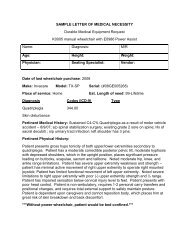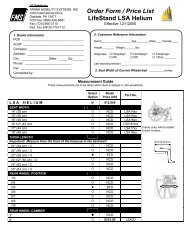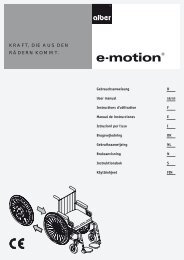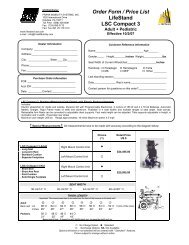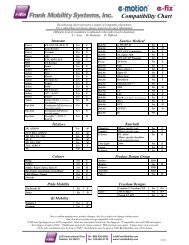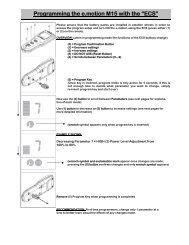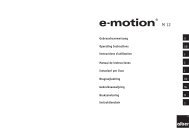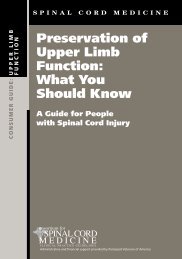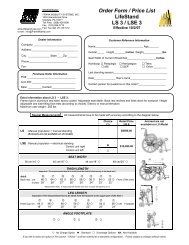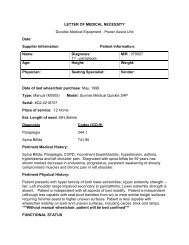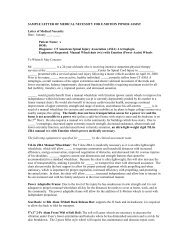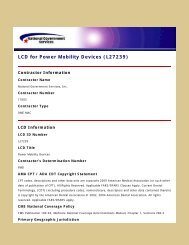letter of medical necessity 1 - Frank Mobility Systems
letter of medical necessity 1 - Frank Mobility Systems
letter of medical necessity 1 - Frank Mobility Systems
Create successful ePaper yourself
Turn your PDF publications into a flip-book with our unique Google optimized e-Paper software.
height surfaces, requiring minimal assist to higher uneven surfaces. Patient isindependent with wheelchair mobility on level and uneven surfaces, including carpet,bricks and ramps. ***Without manual wheelchair, patient will be bed confined***Environmental/Caregiver Supports:Patient has no home health aide. Lives with spouse and 3.0 year old daughter.FUNCTIONAL STATUSSitting Balance: Fair – sits with arm supportUpper Ext. Function: Upper extremity status – Shoulder pain restricts him fromelevation <strong>of</strong> his right arm and shoulder.Transfers: Supervised squat transfers to higher surfacesW/C <strong>Mobility</strong>: Uses manual wheelchairDaily W/C Use: 16 hour per dayAmbulation: Non-AmbulatoryADL: Independent; except for dressingTransport: S.U.V. with hand controlsLiving environment: accessible home with ramp entranceCurrent Equipment: Quickie GP – 60 degree rampSerial #: N/A – scraped <strong>of</strong>fAge <strong>of</strong> Equipment: at least 15.0 years oldProblems with Current Equipment: Current quickie GP – 60 degree rigid frame andseating severe wear and rear secondary to the multiple hours <strong>of</strong> use per day for last 15years. Serious safety considerations are considered due to frame integrity <strong>of</strong> thewheelchair and rust conditions. Long history <strong>of</strong> repairs to wheels, back canes,upholstery footrests and brakes. Totally non-ambulatory, upper neuromuscularextremities have weakened to the point that patient is becoming less and less capable<strong>of</strong> self-propelling his 28 lbs Quickie GP either in this residence or around hisneighborhood. Without some form <strong>of</strong> power assisted mobility, Patient soon will nolonger be able to move unassisted around his residence attending to his activities <strong>of</strong>daily living. Patient’s psychological well-being may also suffer from the ensuinginactivity, isolation and increased dependence on others.The appropriateness <strong>of</strong> a traditional powered wheelchair is in this case uncleargiven patient’s particular condition and architectural layout <strong>of</strong> his home. Some form <strong>of</strong>exercise is also in this <strong>medical</strong> best interest given his long-standing pharmacological



